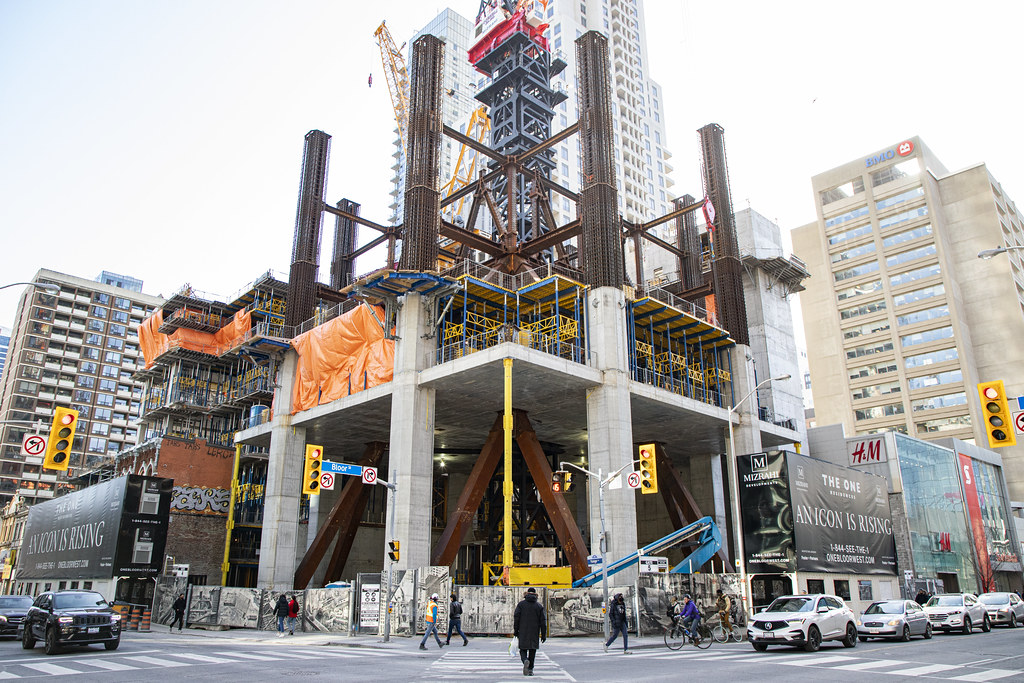Not everyone will agree, but the # of floors in a skyscraper is/are often not a true representation of how many 'storeys' are in a building, the traditional storey generally measuring 10' per floor...er, storey. Using the JP Morgan Chase tower in NYC as an example, it is only 70 'floors'. Seventy floors is a significant figure for any building, but dive a little deeper and one discovers the tower is 1388', an astonishing 20' / floor. Convert JPMC tower to storeys and it is a breathtaking 139 storeys compared to 70 floors. Back to 1 Bloor: The ground floor atrium is, in effect, 4 conventional storeys even though it is identified as 1 floor which seems a frivolous determinant. The next 4 'floors' are, in effect, 2 storeys each. There are 3 mechanical section 'floors' thus far, each of them equivalent to 3 storeys. Therefore, using the conventional standard of 10' / floor by which a storey is measured, the top of the 3rd mechanical section by my count is equivalent to 68 storeys. Using this measurement, it would appear the 75th or 76th 'storey' elevator shaft core has been poured, again a very respectable figure. Pinnacle One Yonge was approved for a height increase to 345 metres by the city's Planning Dept in November 2023, a height of 1131'. Converted to 'floors' Pinnacle One is projected to reach 105 floors, 10.77' / floor, 113 storeys based on a 10' yardstick / floor. While some may suggest everything I have written is merely semantics, the evidence suggests otherwise: a single 'floor' is often a useless and wildly inaccurate basis upon which to calculate a building's true height and or number of storeys. To floor or to storey? That is the question.

